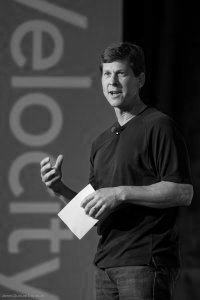We are proud to announce that Kevin Dangoor who started the CommonJS project will speak at JSConf.eu about:
CommonJS: JavaScript vs. Ruby, Python, Java, etc.
 JavaScript is an enormously popular programming language, because of its unique place as the programming language of the web. Outside of that domain, JS is barely a blip compared to other dynamic languages like Python and Ruby. Outside of the browser, JavaScript is lacking something critical: a significant standard library.
JavaScript is an enormously popular programming language, because of its unique place as the programming language of the web. Outside of that domain, JS is barely a blip compared to other dynamic languages like Python and Ruby. Outside of the browser, JavaScript is lacking something critical: a significant standard library.
Thanks to a powerful standard library and a common module system, sophisticated applications can be written in Python and run unchanged on Windows, Mac and Linux and even across different interpreters including Jython and IronPython.
The CommonJS project (formerly ServerJS) is building up a standard library API to give privileged JavaScript applications this same kind of interop. Imagine a server-side webapp that runs equally well in Rhino, SpiderMonkey and v8. We're getting there. Even better, those apps can easily share modules between the browser and the server, which is something you don't get in other languages.
In this talk, I'll provide quick background on the project and demos of several implementations of the emerging standard, including how CommonJS impacts Mozilla's Jetpack and Bespin projects.
About Kevin:
Kevin has been a "software product guy" for more than 20 years. Though he's worked with many languages in many environments, he is best known for his Python work as the founder of the TurboGears web framework and Paver project scripting tool. He has spoken at numerous conferences and is a co-author of Rapid Web Applications with TurboGears. Most recently, he works at Mozilla Labs where he works on the Bespin in-browser developer tool project and started the CommonJS project. He lives in Ann Arbor, Michigan and recently has help start the a2 web developer interest group.


















![Reblog this post [with Zemanta]](http://img.zemanta.com/reblog_e.png?x-id=8537fe96-ecb3-4fd9-8f5b-763097159992)














